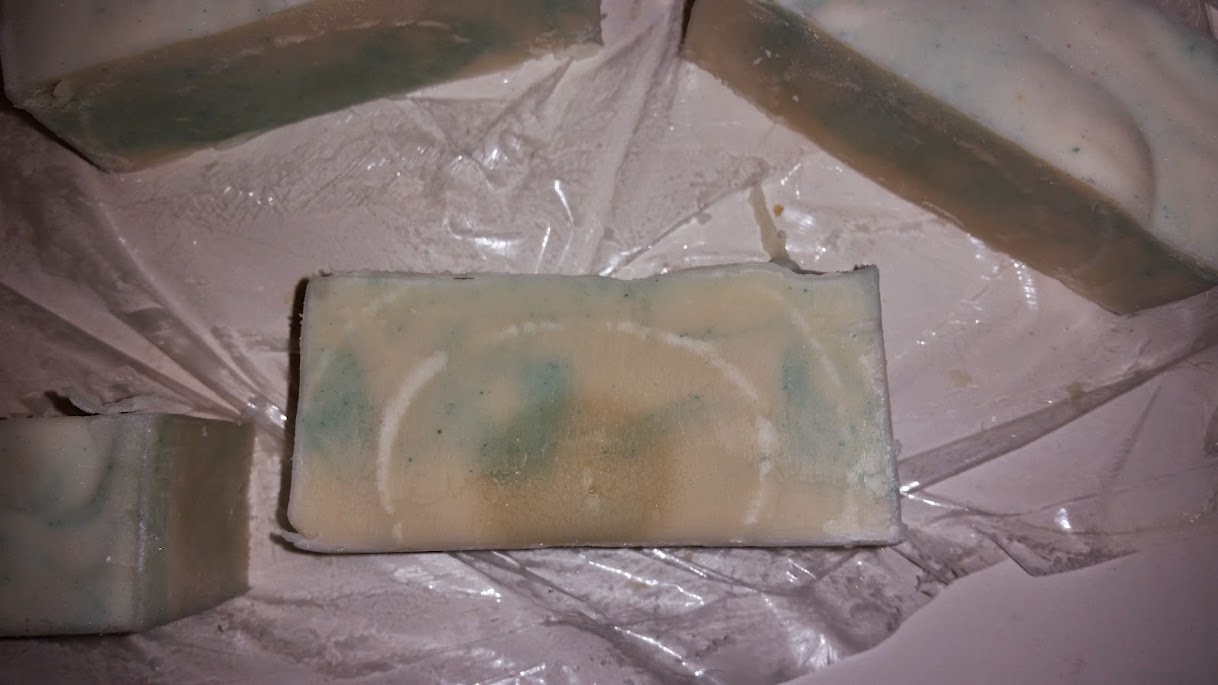ariella42
Well-Known Member
- Joined
- Dec 30, 2014
- Messages
- 89
- Reaction score
- 40

I made yet another ugly soap. Of course, this one smells great (rosemary and eucalyptus EOs), unlike my wine soap. Unfortunately, this one has also developed lye crystals. They're most prominent in the second photo and definitely zap. The soap itself does not zap. The loaf I made also has some white rings in it that seem to be larger ovals around the part in the middle that gelled. The white rings do not zap.
Here's the breakdown of what I did for this batch. I can post the recipe too if that would help. First of all, this was only the second time I did the 50/50 split for milk and the first one was an HP soap. This was also my second batch with the tallow I rendered. I added my lye to my water, added silk and kaolin clay, then let it cool before adding SL. I let my oils cool before adding my milk and EOs to them, then I let both the oils and the lye get to about 110 degrees. When I mixed them, it took longer for them to come to trace than my usual recipe, but I had noticed that with a very similar recipe I made HP before.
Everything seemed normal until I tried to mix my mica into a portion of the batter. The mica just wouldn't blend and color it like normal. I ended up putting all the mica I had left (it was a sample size) into the batter, but it never really colored it. I've used the mica before and it blended and colored beautifully (though in my salt soap it morphed a bit as it cured). Nonetheless, I attempted my swirl in my log mold, then did an in the pot with the remainder and poured it into individual molds. I put everything in the freezer to prevent gel.
I unmolded everything about 12-15 hours later. I noticed that the soaps were still very soft and the log mold was too soft to cut, so I stuck that one back into the freezer for about 12 more hours. By the time I cut the log, the ones that had remained out were weeping liquid. Shortly after cutting the log, it was too. I initially thought it might be EOs and hoped they'd be reabsorbed, but once the liquid evaporated, I was left with zapping crystals.
My question is two-fold - is there anything I can do to save this batch and how do I prevent this in the future?
Sorry for the novel, but I'd really appreciate some advice on this one.




